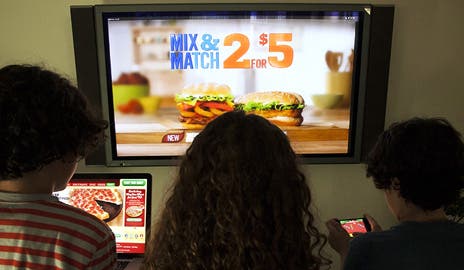
It’s no secret teens are often at odds with perceived injustice and excessive authority. This struggling energy could be used in their favor by channeling it towards making healthier dietary choices, U.S. researchers say. Their study suggests social conscience and a strong urge for autonomy can reshape the perception of healthy eating.
“Our goal here was to portray healthy eating as a way to take a stand against injustice – to stand up for vulnerable people who lack the ability to protect themselves,” the authors wrote in their paper published in the Proceedings of the National Academy of Sciences.
The researchers at the University of Chicago Booth School of Business the University of Texas enrolled eight graders for their study and exposed them to various journalistic accounts of manipulative food industry marketing practices. These include things like engineering food to make it more addictive, deceptive labeling that makes junk food look healthy or selectively targeting the poor and young children. Indeed, these journalistic investigations are backed by science as we’ve previously reported most foods ads on children’s websites market junk food and the same can be seen across other media channels as well.
Essentially, the researchers framed eating healthy as a way to ‘stick it to the man’, and by all accounts, it seemed to work.
The test subjects chose fewer junk food options as snacks and preferred water over sugary sodas. The teens made the choices outside the context of the nutrition talk when they were unaware their choices were being tracked.
According to the study’s results, the teens showed a 7 percentile increase in the rate at which they chose to forgo sugary drinks in favor of water and an 11 percentage point increase in the rate at which they chose something healthy like fruit or carrots instead of unhealthy snacks like chips or cookies. This behaviour was observed outside sessions about nutrition when the teens were unaware their dietary choices were being tracked.
[panel style=”panel-danger” title=”The state of junk food marketing in the U.S.” footer=”“Fast Food FACTS 2013″ report authored by Yale University. “]In 2013, researchers from Yale found the fast food industry spent $4.6 billion to advertise mostly unhealthy products. Children and teens were the focus on many such campaigns.
Key findings include:
- Children ages 6 to 11 saw 10% fewer TV ads for fast food, but children and teens continued to see three to five fast food ads on TV every day;
- Healthier kids’ meals were advertised by a few restaurants, but they represent only one-quarter of fast-food ads viewed by children;
- Less than 1% of kids’ meals combinations at restaurants meet nutrition standards recommended by experts, and just 3% meet the industry’s own Children’s Food and Beverage Advertising Initiative and Kids LiveWell nutrition standards;
- Spanish-language advertising to Hispanic preschoolers, a population at high risk for obesity, increased by 16%;
- Fast food marketing via social media, where most kids linger nowadays, have seen their budgets skyrocket.
[/panel]
Just so you get an idea, a 7 percent points reduction in carbohydrate uptake means losing one pound of body fat (or not gaining for those not overweight) roughly every 6 weeks for boys and every 8 weeks for girls.
“This approach provides an immediate, symbolic benefit for resisting temptation: feeling like a high-status and respect-worthy person right now because one is acting in accordance with important values shared with one’s peers,” said Christopher J. Bryan of the University of Chicago Booth School of Business in a statement.



